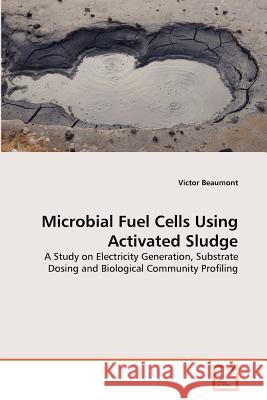Microbial Fuel Cells Using Activated Sludge » książka
Microbial Fuel Cells Using Activated Sludge
ISBN-13: 9783639366938 / Angielski / Miękka / 2011 / 216 str.
The epicentre of the 21st century's greatest challenge lies within energy and water. As fossil fuels are depleted and the scarcity of water increases, these two resources will become increasingly vital. Wastewater treatment technologies have begun to embrace the harvesting of energy from wastes as part of the treatment process. Treated waters can be reused in many applications or treated further for essentially unlimited options. Microbial Fuel Cells (MFC's) represent a novel and innovative branch of both energy production and wastewater treatment.This study focuses on the use of activated sludge and the inherent biological community as electricity producers while biochemically oxidizing the wastewater constituents. The design and performance of the microbial fuel cells is documented and benchmarked, followed by the dosing of several key carbon sources throughout the experiment to determine the impacts on electricity generation and shifts in the biological community profile.This study is especially interesting and useful to chemical and civil engineers working or studying within the wastewater and energy fields though many multidisciplinary professionals will find it enlightening.
The epicentre of the 21st centurys greatest challenge lies within energy and water. As fossil fuels are depleted and the scarcity of water increases,these two resources will become increasingly vital. Wastewater treatment technologies have begun to embrace the harvesting of energy from wastes as part of the treatment process. Treated waters can be reused in many applications or treated further for essentially unlimited options. Microbial Fuel Cells (MFCs) represent a novel and innovative branch of both energy production and wastewater treatment.This study focuses on the use of activated sludge and the inherent biological community as electricity producers while biochemically oxidizing the wastewater constituents. The design and performance of the microbial fuel cells is documented and benchmarked, followed by the dosing of several key carbon sources throughout the experiment to determine the impacts on electricity generation and shifts in the biological community profile.This study is especially interesting and useful to chemical and civil engineers working or studying within the wastewater and energy fields though many multidisciplinary professionals will find it enlightening.











